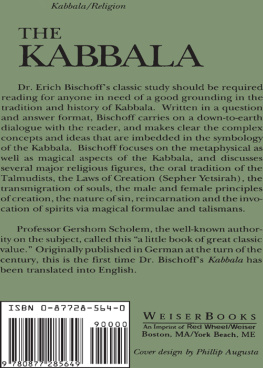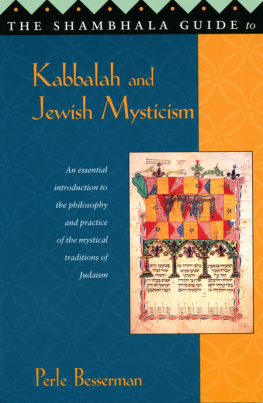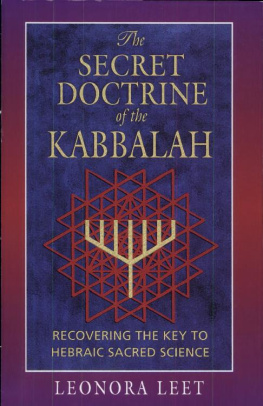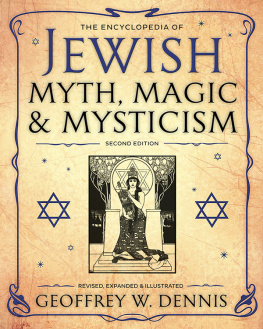

First published in 1985 by
Red Wheel / Weiser, LLC
York Beach, ME
With offices at
368 Congress Street
Boston, MA 02210
www.redwheelweiser.com
English translation copyright 1985 Samuel Weiser, Inc.
All rights reserved. No part of this publication may be reproduced or transmitted in any form or by any means, electronic or mechanical, including photocopying, recording, or by any information storage and retrieval system, without permission in writing from Red Wheel / Weiser. Reviewers may quote brief passages.
First published in Germany circa 1910
Library of Congress Catalog Card Number: 84-52262
ISBN 0-87728-564-0
BJ
Cover art is a mezuzah from the Jewish Museum, London. This photograph of the 15th century Italian bone carving is used by kind permission of the Warburg Institute, London.
Typeset in 11 point Perpetua
Printed in the United States of America
08 07 06 05 04 03
15 14 13 12 11 10 9 8 7 6
The paper used in this publication meets the minimum requirements of the American National Standard for Permanence of Paper for Printed Library Materials Z39.48-1984.
www.redwheelweiser.com
www.redwheelweiser.com/newsletter
TABLE OF CONTENTS
LIST OF FIGURES
FOREWORD
For centuries, reflective people have felt attracted to the lonely path of mysticism. Since ancient times this path existed and it was not the most common of minds that searched for it. The paths of mysticism have been many and varied, but all have aimed at one goal: the one that contains ALL! Not only to Rome lead many roads; it would be a mistake to consider but one single way as the only true one. Although many students of mysticism have explored Buddhism, the Kabbala and its doctrines have a long and profound history as well. Mystics as well as those people who are aware of the development of the human spirit throughout the ages have studied Kabbala. It is even possible that the Kabbalistic line of thought is deeper than that of the Buddhistic.
In spite of excellent work exploring this field there is still no book that, short and easily understandable to everyone, provides the reader with material that is worth knowing from the Kabbala. Because of this, I have used a question and answer format to try to impart the most remarkable information from the Kabbala, believing that Jewish literature is still much closer to us than that of the orient. For those readers to whom this subject is new, I hope that this book will not be a disappointment. The illustrations come, for the greater part, from very rare originals that were very difficult to come by.
The Author
CHAPTER 1
CHARACTER AND ORIGIN OF THE KABBALA
1. What is the Kabbala?
The Kabbala contains the complete mystical doctrines of Judaism which include the theosophical-metaphysical-naturalistic speculations as well as the fantasies based upon magical superstitions.
2. What does Kabbala actually mean?
This name, in use since the 13th century A.D., really means tradition. The system can lay claim to the name secret doctrine insofar that it was known (other than to Bible and Talmud scholars) to only a very few. It was communicated to excellent pupils only.
3. How old is the Kabbala?
The Kabbalists date the principle conceptions of the Kabbala back to the earliest timesback to Moses and even to Abraham and Adam. As to the true founders of the Kabbala, however, they mention mainly three Talmudists: Rabbi Ismael ben Elisa (about 130 A.D.), Rabbi Nechunjah ben Hakana (about 75 A.D.), and especially Simeon ben Yohai (about 150 A.D.), the last of whom they point out is author of the famous Zohar (see also question 45).
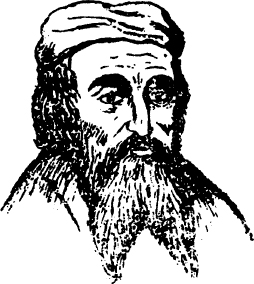
Figure 1. Rabbi Simeon ben Yohai.
4. How much of the Kabbala should be believed?
Such speculations as the Kabbala contains are in general foreign to the nature of the older Judaism and especially to the original Mosaism. The enormous collective work, the Talmud, does contain many mystical conceptions about God and his chariot (the Merkabah according to Ezekiel); about heaven, hell, and the world (angelology, demonology, cosmology); about the origin, character, and the continual existence of the soul; the future world; and about various magical rituals. Some of these contemplations and rituals are, nevertheless, often classified as risky, useless, and dangerous. The elements entering mostly from Persia and later from Neoplatonism have nothing to do with the character of the Talmud writings. Such speculations and doctrines are not communicated by the three above-mentioned Talmud scholars (see question 3) even though they exist within the Talmud of Midrasch. The Kabbala as a mystical systemand its development as suchbelongs undoubtedly in the Middle Ages and its origin dates at most back to the 7th century A.D. From then on it richly developed in various ways until it reached its peak in the book Zohar (see question 45), with its last offshoots extending to our time.
5. Which periods can be distinguished in the development of Kabbalism?
Its origin up to the book Yetsirah.
Its further development under the influence of the book Yetsirah (10th12th century).
The completion of the Kabbala from the rise of the actual Sephiroth system to the end of the book Zohar (13th-15th century).
The later development ( 16th-17th century).
The fall (since the 18th century).
6. Is the Kabbala based on oral tradition only?
No. Several of its doctrines may have been propagated for a long time only orally before they were written down; others may not have been communicated in writing. But what we know of the Kabbala comes from written sources and the first certain knowledge about the Kabbalistic doctrines was drawn exclusively from the Kabbalistic writings dating from the 7th-9th century.
7. Is the Kabbalistic literature extensive?
Very extensive. In addition to a great number of printed writings there exists in public and private libraries an unbelievable amount of manuscripts of Kabbalistic nature which are hardly known. Furthermore one supposes that many more such writings have been lost.
8. In which language is this literature written?
Mainly in new Hebrew and Chaldean, like the Talmud literature. Only a few commentaries on the book Yetsirah (see question 17) are written in Arabic.
9. Which Kabbalistic book is written in Chaldean?
The Zohar, written in Spain at the end of the 13th century, the principal work of Kabbalistic literature.
10. What are the contents of the Kabbalistic writings?
In addition to theosophical, metaphysical, cosmological, naturalistic, and other such speculations, and in addition to daring poetical representations of abstract ideas and high ethical thoughts, there is also systemically arranged nonsense, worthless fantasies, and various superstitions.
11. Which three main schools of thought can be distinguished in Kabbalism?
The metaphysical-speculative, the ethical-ascetical, and the magical-superstitious, though they cannot be clearly distinguished. The decline of Kabbalism in more modern times is mainly charaterized by an emphasis on the latter.
Next page
